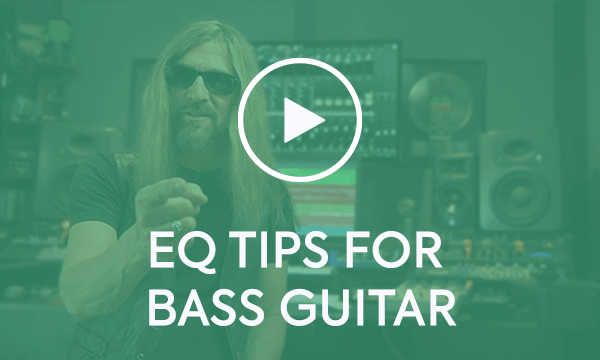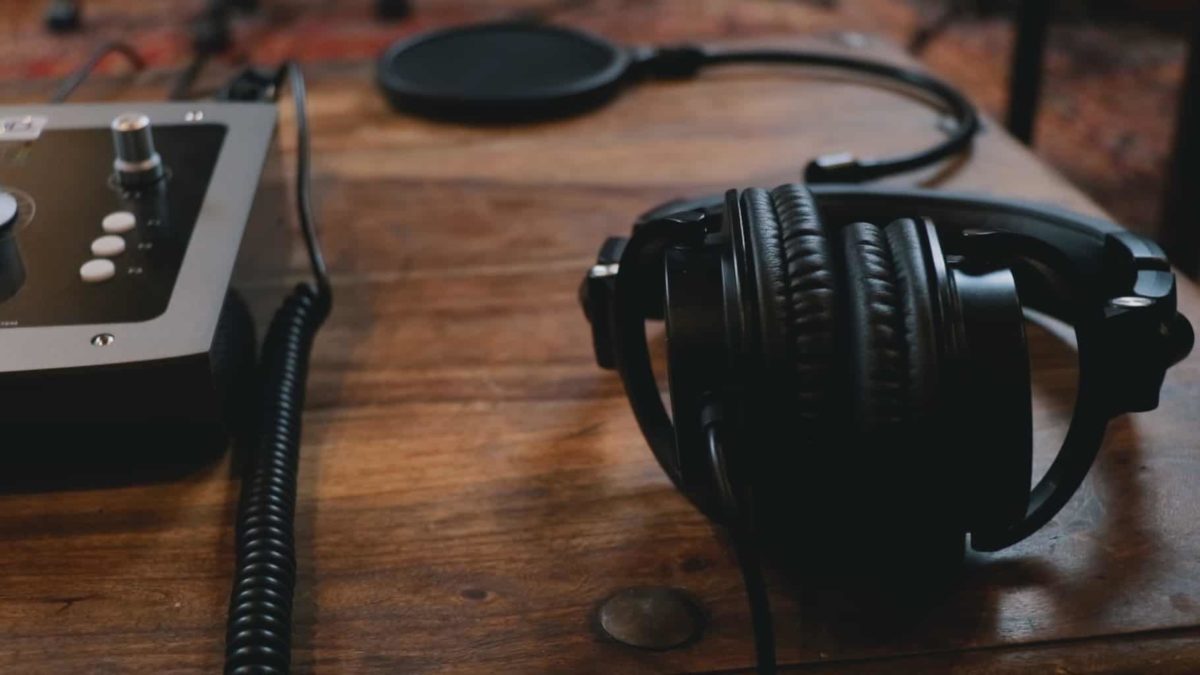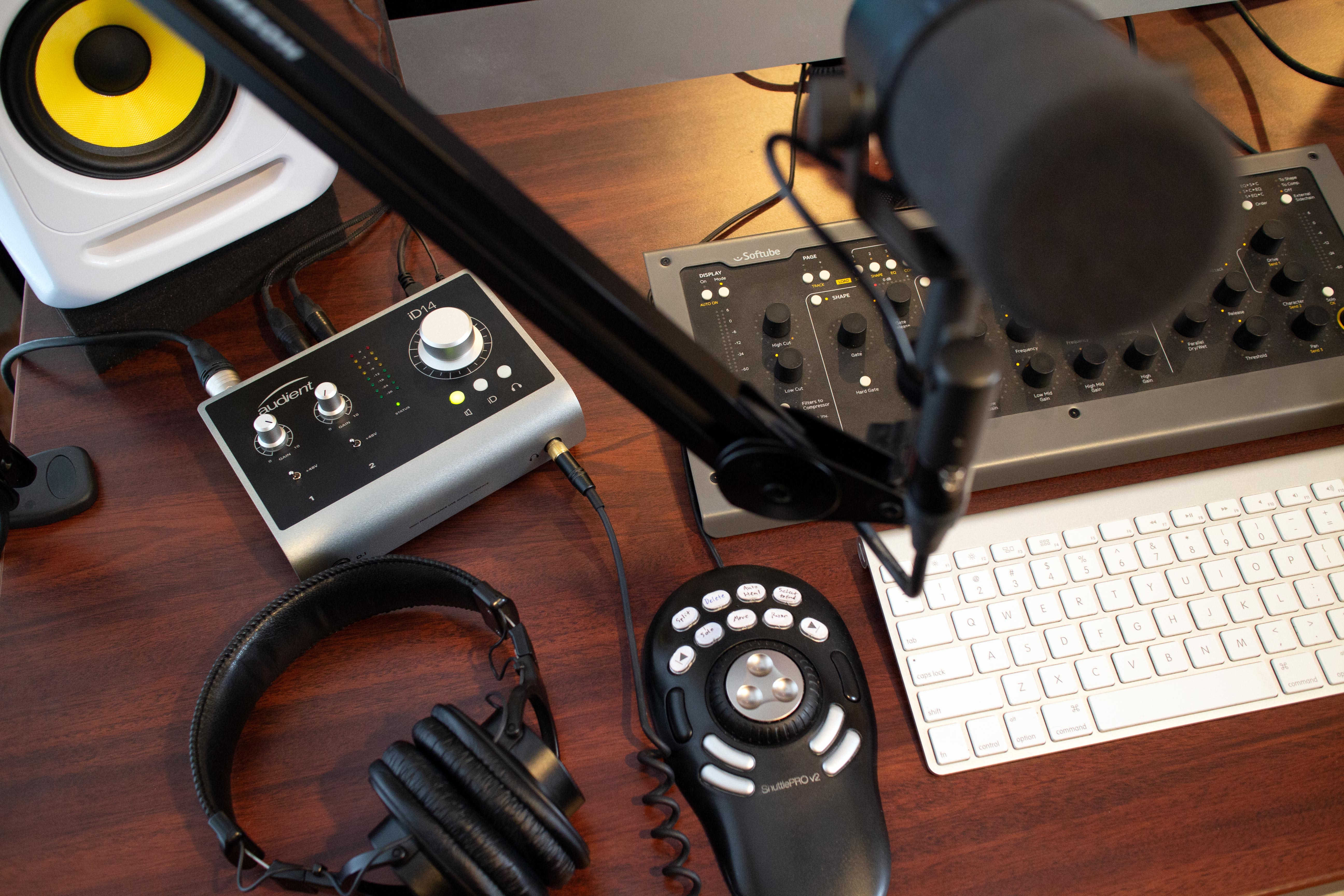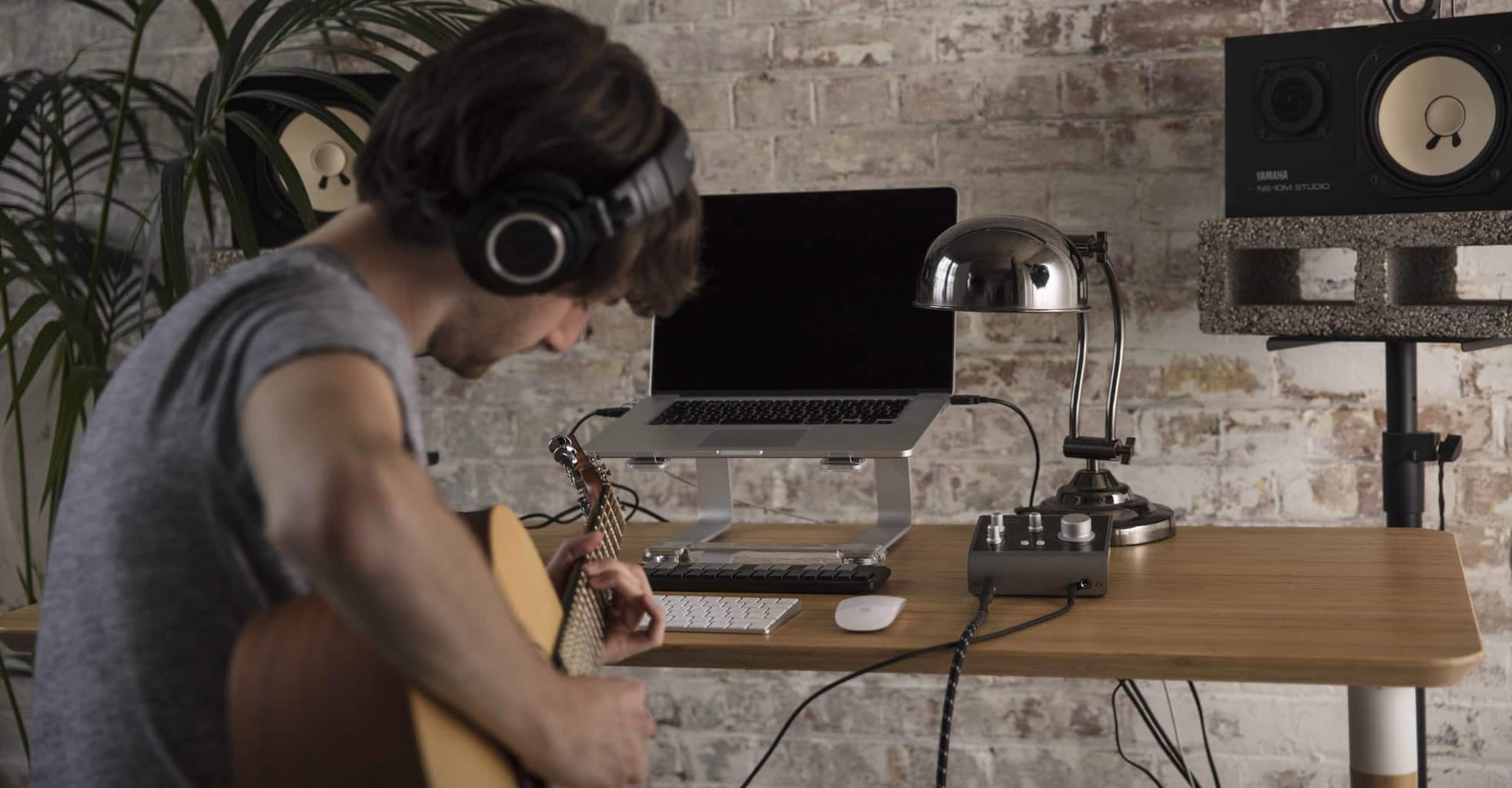The world of music production can be a confusing and intimidating place. Ease yourself into it and get off on the right foot with these helpful pointers.

Written by EVO

1. Sort out your setup
You’re not going to get much music done without the right equipment, but happily, when you’re just getting started, there’s not a lot of it to consider. Assuming you already own a half decent Mac or PC, you just need to add an audio interface, a pair of monitor speakers and a USB MIDI keyboard. We don’t have the space here to get into the details of these, but there are plenty of options in the speakers and keyboard departments to suit all budgets (although spending more on monitors, especially, will pay notable dividends in terms of quality). And when it comes to getting audio signals into and out of the computer, you can’t go wrong with the EVO 4 audio interface, featuring super clean preamps and converters for top notch recordings, a convenient Volume knob, and the Smartgain function, which automatically optimises microphone preamp gain

2. Choose a DAW (and don’t dive into plugins just yet)
With the hardware side of things covered, perhaps the biggest decision you need to make in setting up your home studio is which DAW to use. ‘DAW’ stands for Digital Audio Workstation, and it’s the central software application in which you’ll be recording and programming audio and MIDI tracks, running virtual synths, samplers and other instruments, mixing with plugin effects and generally producing all your music.
While all DAWs are built to do the same fundamental thing (that is, serve as a complete virtual recording and production studio), they differ greatly in their operational specifics, and choosing the one that best suits your workflow and perhaps even musical genre is key. Lucky you: we’ve rounded up five of the best DAWs for beginners.
One thing we would suggest you don’t concern yourself with too much at this early stage is third-party plugins. The market for virtual instruments and effects is vast and bursting with wondrous gadgets, but until you’ve learnt the ropes and are more qualified to actually know what you might want from such things, the plugins that come with your DAW should more than suffice.
3. Don’t run before you can walk
There’s a lot to learn about in music production, from composition, recording and arrangement, to synthesis and sampling, to compression, EQ, stereo positioning and mixing in general, and much more, and all of it is loaded with daunting technical jargon. Don’t let yourself feel overwhelmed, though: discovering how all this stuff works makes for a hugely enjoyable and rewarding journey, as long as you take your time, and focus first and foremost on mastery of the fundamentals. Endless excellent resources are available online to help you ascertain exactly what those fundamentals are, and educate you in their theory and application. YouTube is a great place to start; we’re always adding new tutorials to the EVO website; and if you’re really serious, you could even consider enrolling on an online music production course.
This is also why we suggest initially staying within the bounds of your DAW’s stock plugins. The best way to learn how to, say, program an analogue-style synth is to restrict yourself to a single plugin, and the one included with your DAW will likely be suitably comprehensive yet relatively simple and user-friendly, and probably sounds great.

4. Find your sound
If, as is surely the case, you want your music to stand out from the crowd, you need to develop a style of your own. You might be surprised to learn that this is actually comparatively easy, as we’re all unique in our inherent sonic and compositional taste, and the limitless canvas presented by your DAW and plugins enables us to create pretty much any sound we can imagine. Indeed, once you’ve mastered the technicalities of production, you can’t help but come across as yourself in your music. Isn’t that a beautiful thing?
Prior to reaching that point, though, in the process of defining your own aesthetic, don’t be afraid to copy, rip off and otherwise emulate the sounds of your favourite artists to a greater or lesser extent. You’re getting into all this because of the music you already love, so embrace that fact and be open in your inspiration. Your own voice, with all its coalescent influences, will soon emerge.
5. Do try to get tracks finished
As your knowledge rapidly develops in those first few weeks and months of self-education, you’ll frequently feel like ditching your current work-in-progress as its now-apparent failings being to grate, and instead starting a new one from scratch. Abandoning every project before it gets to the mixing stage merely delays you learning how to mix, though, which is arguably the most important part of the entire process. Sure, those early efforts will no doubt make for excruciating listening a few years down the line, when you’ve honed your skills, but this isn’t a developmental stage that can be skipped unless you’re a ‘natural’ mix engineer – which no one is. Experience is (almost) everything.

6. Seek the opinions of others
No producer is an island, and getting input and feedback from other musicians (via social media and online communities) and non-musician listeners is crucial in refining your craft and simply ensuring that your tracks and mixes are hitting some sort of consensual mark. And while ego-boosting compliments are great, it’s negative criticism that matters most. You don’t have to agree with every suggested tweak, of course, but stay open-minded and up for trying new things – you can always undo them if they don’t work out.
Related to this, collaboration – sporadic or long-term – can be very fruitful, too. By working in partnership with a like-minded producer, as well as coming up with tunes very different to those you make alone, you’ll also benefit from the sharing of knowledge and bouncing back and forth of ideas, tastes and technical proclivities.

7. Don’t lose sight of the music itself
The miracle of software-based music production gives everyone the means to produce genuinely release-quality music in the comfort of their own home. As empowering as this is, however, if you approach music making with nothing but commercial success on your own agenda, you’re likely to end up disappointed and frustrated. So don’t!
Make music because you love it, put your tracks out in the world via streaming services (or not – there’s certainly no obligation), and let whatever happens happen. As long as you enjoy your artistic journey, that’s really all that matters.
Related Articles
The world of music production can be a confusing and intimidating place. Ease yourself into it and get off on the right foot with these helpful pointers.

Written by EVO

1. Sort out your setup
You’re not going to get much music done without the right equipment, but happily, when you’re just getting started, there’s not a lot of it to consider. Assuming you already own a half decent Mac or PC, you just need to add an audio interface, a pair of monitor speakers and a USB MIDI keyboard. We don’t have the space here to get into the details of these, but there are plenty of options in the speakers and keyboard departments to suit all budgets (although spending more on monitors, especially, will pay notable dividends in terms of quality). And when it comes to getting audio signals into and out of the computer, you can’t go wrong with the EVO 4 audio interface, featuring super clean preamps and converters for top notch recordings, a convenient Volume knob, and the Smartgain function, which automatically optimises microphone preamp gain

2. Choose a DAW (and don’t dive into plugins just yet)
With the hardware side of things covered, perhaps the biggest decision you need to make in setting up your home studio is which DAW to use. ‘DAW’ stands for Digital Audio Workstation, and it’s the central software application in which you’ll be recording and programming audio and MIDI tracks, running virtual synths, samplers and other instruments, mixing with plugin effects and generally producing all your music.
While all DAWs are built to do the same fundamental thing (that is, serve as a complete virtual recording and production studio), they differ greatly in their operational specifics, and choosing the one that best suits your workflow and perhaps even musical genre is key. Lucky you: we’ve rounded up five of the best DAWs for beginners.
One thing we would suggest you don’t concern yourself with too much at this early stage is third-party plugins. The market for virtual instruments and effects is vast and bursting with wondrous gadgets, but until you’ve learnt the ropes and are more qualified to actually know what you might want from such things, the plugins that come with your DAW should more than suffice.
3. Don’t run before you can walk
There’s a lot to learn about in music production, from composition, recording and arrangement, to synthesis and sampling, to compression, EQ, stereo positioning and mixing in general, and much more, and all of it is loaded with daunting technical jargon. Don’t let yourself feel overwhelmed, though: discovering how all this stuff works makes for a hugely enjoyable and rewarding journey, as long as you take your time, and focus first and foremost on mastery of the fundamentals. Endless excellent resources are available online to help you ascertain exactly what those fundamentals are, and educate you in their theory and application. YouTube is a great place to start; we’re always adding new tutorials to the EVO website; and if you’re really serious, you could even consider enrolling on an online music production course.
This is also why we suggest initially staying within the bounds of your DAW’s stock plugins. The best way to learn how to, say, program an analogue-style synth is to restrict yourself to a single plugin, and the one included with your DAW will likely be suitably comprehensive yet relatively simple and user-friendly, and probably sounds great.

4. Find your sound
If, as is surely the case, you want your music to stand out from the crowd, you need to develop a style of your own. You might be surprised to learn that this is actually comparatively easy, as we’re all unique in our inherent sonic and compositional taste, and the limitless canvas presented by your DAW and plugins enables us to create pretty much any sound we can imagine. Indeed, once you’ve mastered the technicalities of production, you can’t help but come across as yourself in your music. Isn’t that a beautiful thing?
Prior to reaching that point, though, in the process of defining your own aesthetic, don’t be afraid to copy, rip off and otherwise emulate the sounds of your favourite artists to a greater or lesser extent. You’re getting into all this because of the music you already love, so embrace that fact and be open in your inspiration. Your own voice, with all its coalescent influences, will soon emerge.
5. Do try to get tracks finished
As your knowledge rapidly develops in those first few weeks and months of self-education, you’ll frequently feel like ditching your current work-in-progress as its now-apparent failings being to grate, and instead starting a new one from scratch. Abandoning every project before it gets to the mixing stage merely delays you learning how to mix, though, which is arguably the most important part of the entire process. Sure, those early efforts will no doubt make for excruciating listening a few years down the line, when you’ve honed your skills, but this isn’t a developmental stage that can be skipped unless you’re a ‘natural’ mix engineer – which no one is. Experience is (almost) everything.

6. Seek the opinions of others
No producer is an island, and getting input and feedback from other musicians (via social media and online communities) and non-musician listeners is crucial in refining your craft and simply ensuring that your tracks and mixes are hitting some sort of consensual mark. And while ego-boosting compliments are great, it’s negative criticism that matters most. You don’t have to agree with every suggested tweak, of course, but stay open-minded and up for trying new things – you can always undo them if they don’t work out.
Related to this, collaboration – sporadic or long-term – can be very fruitful, too. By working in partnership with a like-minded producer, as well as coming up with tunes very different to those you make alone, you’ll also benefit from the sharing of knowledge and bouncing back and forth of ideas, tastes and technical proclivities.

7. Don’t lose sight of the music itself
The miracle of software-based music production gives everyone the means to produce genuinely release-quality music in the comfort of their own home. As empowering as this is, however, if you approach music making with nothing but commercial success on your own agenda, you’re likely to end up disappointed and frustrated. So don’t!
Make music because you love it, put your tracks out in the world via streaming services (or not – there’s certainly no obligation), and let whatever happens happen. As long as you enjoy your artistic journey, that’s really all that matters.





